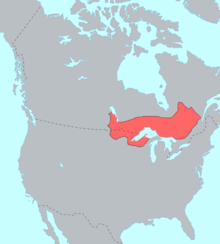Hello again folks,
Recently, I was down the internet rabbit hole, and I came across something that I think would be interesting for the readers of this blog. As I am a citizen of Michigan, I spend a lot of time reading about the history of this land and state. This inevitably means I spend time reading about Native Americans of this region, and the history of European colonization of the area.
Which of course brought me across the topic of today’s post; The Finidians.
First, it is important to start out with the caveat that the history behind what I am going to talk about today is well beyond that of any single blog post. The Native American (Ojibwe, Anishinaabe, Algonquin and others) is more than enough for a series on it’s own. As usual, I am providing several links at the bottom of this post for those that want to explore more.
With that said, let’s start with the Ojibwe, a people Native to the Great Lakes region. The map below is from Wikipedia; Ojibwe Territory, before European contact, encompassing Michigan’s Upper Peninsula, the Midwest, and Canada.
The Ojibwe are an indigenous people to the area, and obviously were here well before European settlers arrived. Just as the briefest introduction, here I brief selection from Wikipedia on the Ojibwe;
“The Ojibwe language is Anishinaabemowin, a branch of the Algonquian language family. They are part of the Council of Three Fires (which also include the Odawa and Potawatomi) and of the larger Anishinaabeg, which also include Algonquin, Nipissing, and Oji-Cree people. Historically, through the Saulteaux branch, they were a part of the Iron Confederacy with the Cree, Assiniboine, and Metis. The Ojibwe are known for their birchbark canoes, birchbark scrolls, mining and trade in copper, as well as their harvesting of wild rice and maple syrup.” (Wikipedia, Ojibwe)
Now, after Europeans started to land on the continent, fight their wars, and eventually form the US government *hand waving over a buttload of contact history*; in the 19th and early 20th century another group of immigrant found their way across the ocean and settled in the same areas. The Finns. The map below is from Wikipedia as well, and these people settled in many of the areas of the colonized Ojibwe.
“Between 1860 and 1924 some 370,000 people left Finland for North America to seek a better life. The main reasons to emigrate were unemployment, social problems and the period of ‘Russification’ before Independence–but a desire for adventure was also a factor. In America Finns worked in the forests and the mines. While out in the woods and at trade union meetings they met Native Americans and even married some of them. The majority of marriages were with members of the Ojibwa tribe, the largest in the region. Finns tended to have less knowledge about their new home country–and therefore also fewer prejudices about the people native to the land than immigrants from other European countries.” (The Findians)
And to the surprise of none of you following along, the Findians came into being. It also turns out, that the Native Ojibwe and the Finns shared something in common; a deep love of the forests.
“There are many reasons for the common understanding forged by Finns and Native Americans, but above all they were united by their intimate relationship with the forest. Just like the Ojibwa Finns hunted, fished and foraged. The locals also valued Finns’ handiwork skills: the ability to build a boat or carve skis. Finns learned how to cultivate maize and use medicinal herbs, among other things. In return they lent their expertise in building log cabins and weaving shoes out of birch bark.” (The Findians).
As sometimes happens when two cultures meet and find common ground, a syncretism resulted that bonded the two people, in marriage and in culture. They shared knowledge and stories, and formed a unique community of people. I realize that is painting with a broad brush, and does gloss over some rather darker truths of colonization and indigenous cultural genocide, Again, that’s way out of the scope of this short post.
But this particular Findian rabbit hole does come at an interesting time for me. There are more thoughts coming; on multiculturism, and syncretism that is part of the American experience, and also part of my own. There is something that speaks to me here, as a Michigander of Nordic/Finnish desecent. (A long long time ago, but still.) There is a common experience of a settler on colonized indigenous land, and maybe the glimmer of finding a better future. But those are all thoughts for another post.
As always,
Thanks for reading!
Sources/References;
The Findians. (Check out this site for amazing pictures and more context. https://web.archive.org/web/20210911100325/https://yle.fi/uutiset/osasto/news/findians__the_story_of_finns_distant_cousins/9087943
https://en.wikipedia.org/wiki/Findians

